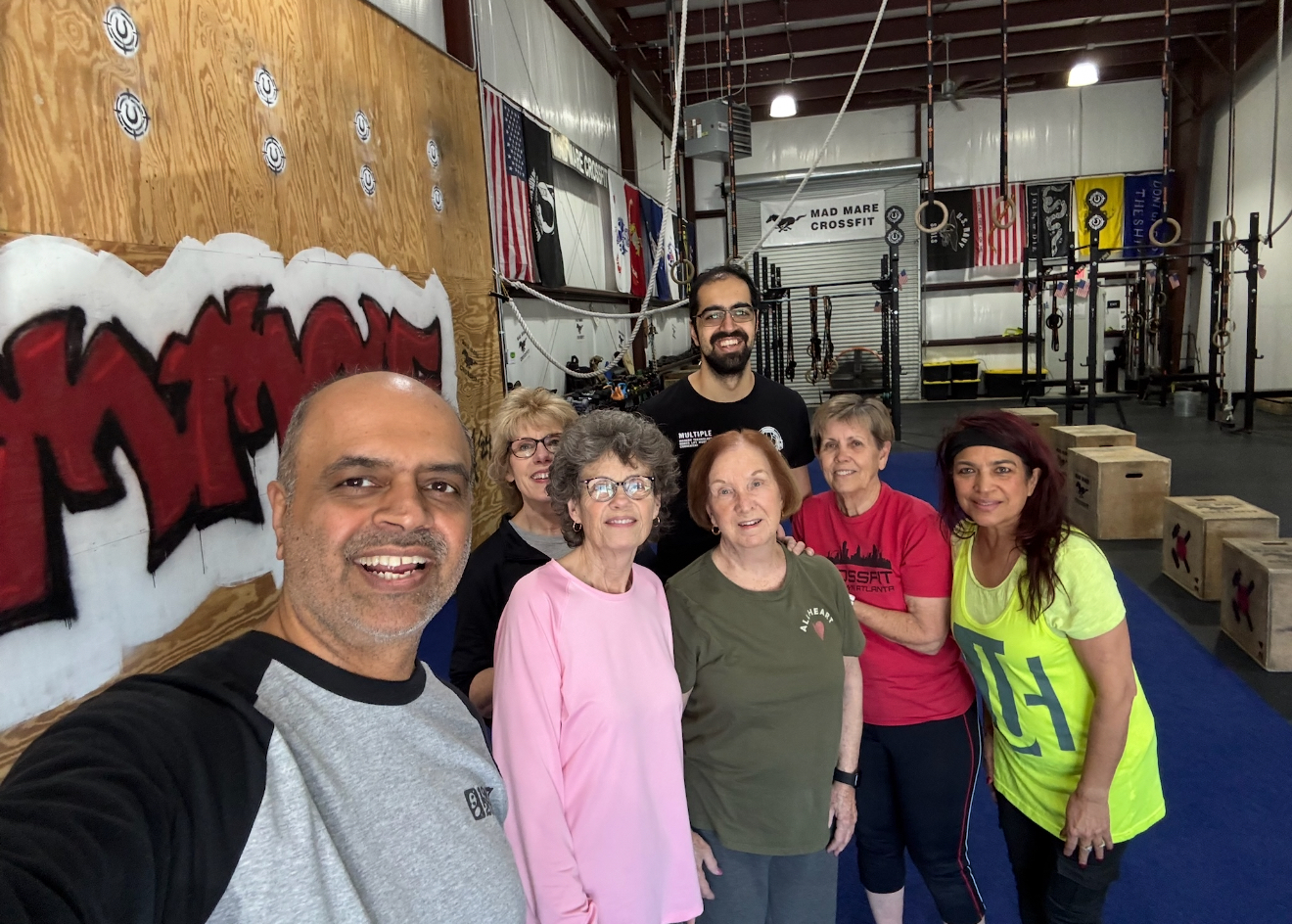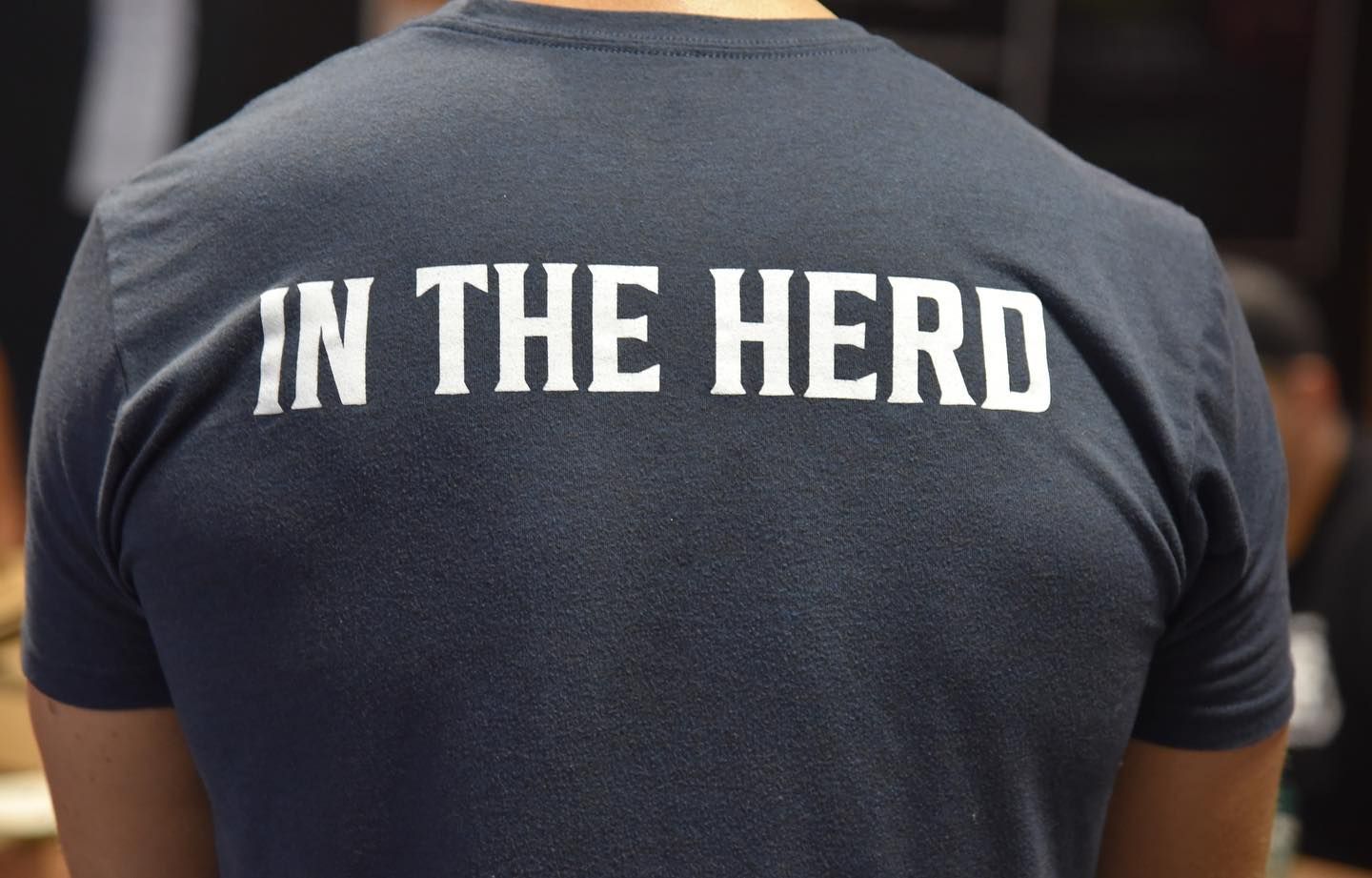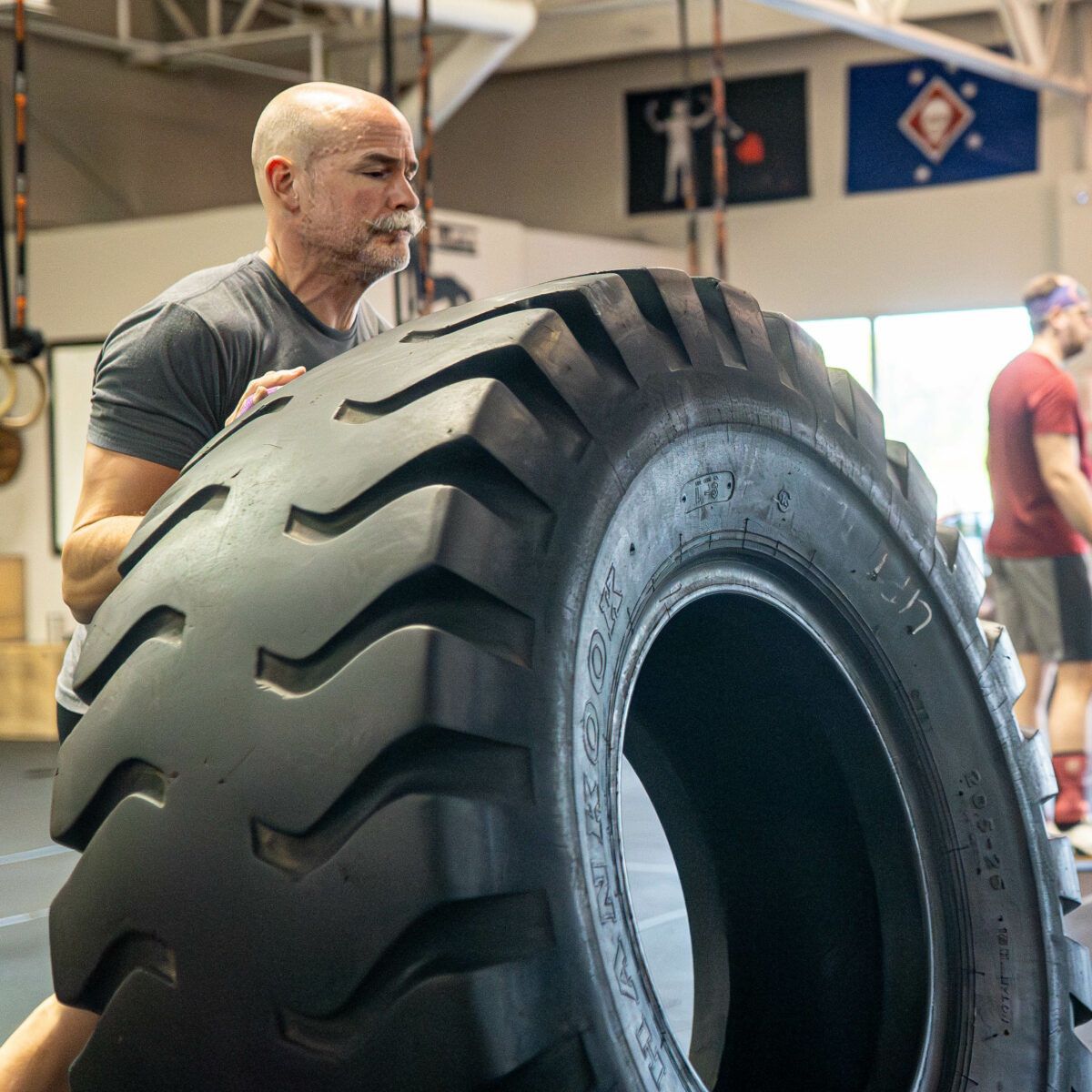What Should I Eat?
Tony Hawranko • March 31, 2025
What is the best mix of fats, carbs, and proteins?
Did you ever wonder if eating different foods could effect your WOD performance? This short 3-minute video explains what you should consider eating prior to and after your WOD.
Previous Blogs
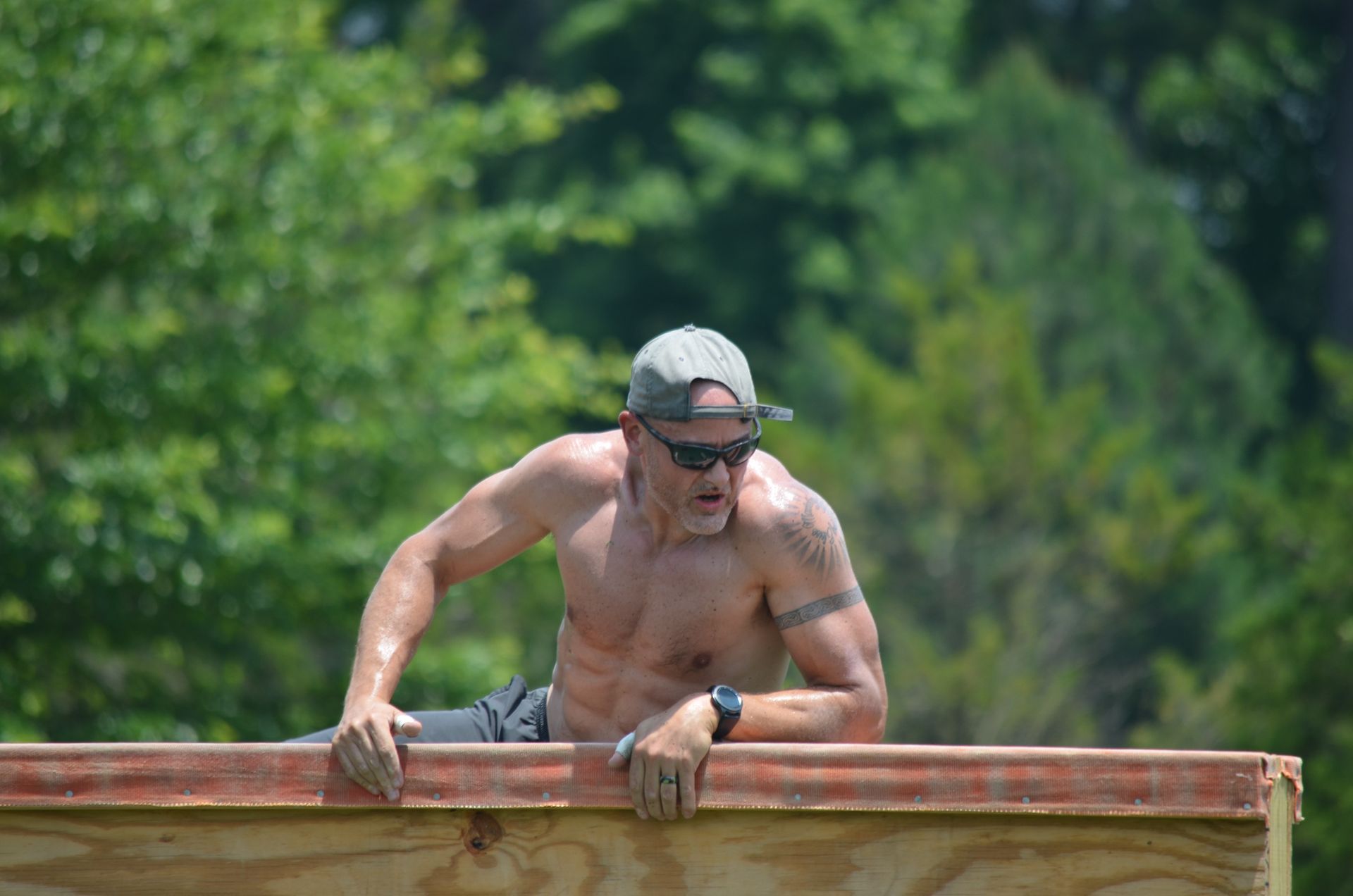
Understanding Zone Training: Myths, Realities, and How to Use It Wisely When it comes to optimizing your workouts and reaching your fitness goals, understanding how hard your body is working can be just as important as knowing what movements you’re doing. This is where zone training comes into play. Originally developed for endurance athletes, zone training uses your heart rate to guide the intensity of your workouts. It’s now commonly found in mainstream fitness programs, smartwatches, and boutique fitness studios. But with its growing popularity has come a fair amount of confusion and misinformation . In this blog, I'm going to try to simplify what heart rate zones are, what they can (and can’t) tell you, and how to decide if zone training is a smart tool for your personal fitness journey. What Is Zone Training? Zone training is a method of structuring cardiovascular exercise based on intensity, measured by heart rate. Your heart rate is typically expressed as a percentage of your maximum heart rate (HRmax) , which is often estimated with the formula: 220 minus your age = estimated HRmax From there, your heart rate is segmented into five (sometimes six) zones: Zone 1 - roughly 50–60% of HRmax / Very light Active recovery, warm-ups Zone 2 - roughly 60–70% of HRmax / Light Fat burning, aerobic base building Zone 3 - roughly 70–80% of HRmax / Moderate Improved endurance, heart efficiency Zone 4 - roughly 80–90% of HRmax / Hard Improved anaerobic threshold Zone 5 - roughly 90–100% of HRmax / Very hard Max performance, power output Each zone engages different energy systems and offers different physiological benefits. For example, Zone 2 helps build long-term aerobic capacity, while Zone 4 and 5 target speed, power, and high-intensity performance. I continuously use the word "roughly" and "approximately" because Zone Training is NOT an exact science. Everyone's body reacts differently, and HR monitors are only so accurate. Also, our "HRmax" is an approximation as well. As you can see from the equation above, it's "estimated". Besides, we always tell each other that "age is just a number", no? The Myths of Zone Training Despite its usefulness, zone training is often misunderstood — especially when used outside of its original endurance-sport context. Let’s break down some of the most common myths: ❌ Myth #1: Zone training is the best system for everyone While heart rate zones are a solid tool for endurance athletes , they’re not universally applicable. Powerlifters, CrossFit athletes, or those training for muscular hypertrophy won’t gain much from tracking heart rate alone. Reality: Zone training is a tool , not a universal solution. It works best when applied to specific goals like improving aerobic fitness, stamina, or endurance — not necessarily when chasing strength or muscle mass. ❌ Myth #2: The “fat-burning zone” is the most efficient way to lose fat This is probably the most popular misunderstanding in commercial fitness. Yes, Zone 2 uses fat as a primary fuel source, but that doesn’t mean it’s the best for fat loss. Reality: Higher zones (3–5) burn more total calories , and it’s total energy balance that matters for fat loss—not which fuel source your body uses during exercise. ❌ Myth #3: The higher the zone, the better the workout People often think that if their heart rate isn’t sky-high, they’re not working hard enough. But that’s simply not true. Reality: High-intensity work has its place, but overusing Zones 4–5 can lead to burnout, elevated cortisol, and injury. Elite endurance athletes spend 70–80% of their training time in Zone 2 to build a solid aerobic base. Your body needs variety to adapt and grow. ❌ Myth #4: Your heart rate is a perfectly accurate measurement of effort Heart rate is influenced by many factors: stress, hydration, caffeine, sleep, heat, even time of day. Reality: While useful, heart rate is just one piece of the puzzle . RPE (Rate of Perceived Exertion), breathing rate, and movement quality are also key indicators of intensity and recovery needs. ❌ Myth #5: Zone training replaces strength training Since it’s focused on cardiovascular intensity, zone training doesn’t stimulate muscle growth or bone density the way lifting does. Reality: For well-rounded fitness, you still need resistance training , mobility work, and proper recovery. Zone training supports your goals—it doesn’t cover all of them. Real Benefits of Zone Training Zone training has legitimate value when applied correctly. Here’s what it can do well: ✅ Improve aerobic efficiency Zone 2 training increases mitochondrial density and teaches your body to burn fat more effectively during exercise. ✅ Prevent overtraining By mixing lower-intensity days with hard intervals, zone training can help avoid the all-too-common trap of “going hard every day,” which often leads to fatigue or injury. ✅ Help with pacing Especially in endurance sports or longer CrossFit workouts, heart rate feedback can keep athletes from burning out too early in a session. ✅ Monitor cardiovascular progress Over time, if you’re able to perform more work while staying in a lower heart rate zone, it’s a clear sign that your aerobic fitness is improving. Should You Use Zone Training? Whether or not zone training is right for you depends on your goals. Great candidates include: Runners, cyclists, rowers, triathletes CrossFit athletes seeking better aerobic capacity for long metcons - remember, CrossFit is WAY more than just aerobic capacity General fitness clients looking to improve stamina or heart health Zone training becomes especially effective when paired with a strength program , smart nutrition, and adequate recovery. Maybe skip it if: You train primarily for maximum strength, powerlifting, or aesthetics You don’t have a reliable heart rate monitor You tend to get anxious or overly fixated on numbers (you know who you are) How to Get Started Calculate your HRmax using 220 minus your age (or better, test it directly under supervision). Use a heart rate monitor for accuracy — wrist-worn monitors are OK, but chest straps are more precise. Start tracking your workouts and aim for a mix of Zone 2 base-building and higher zone intervals. Combine with strength training 2–3 days per week. Most likely - if you follow our programming - you're already getting this. Evaluate every 4–6 weeks —can you do more work at the same heart rate? That’s progress. I can't say it enough - track your results. Final Thoughts Zone training isn’t a gimmick—it’s a legitimate, research-backed method to improve endurance, burn fat, and build heart health. But like any tool, it works best when used in the right context. At Mad Mare CrossFit , we don’t train just for heart rate numbers. We train for real results using 10 physical skills as a benchmark — strength, endurance, stamina, speed, cardiovascular capacity, balance, accuracy, power, agility, flexibility, and most importantly, confidence that carries over into life. Zone training can be part of that picture, but it’s never the whole story. If you're curious about how to blend zone training into your CrossFit or personal training program, come talk to me or one of our coaches. We’re here to guide you through the data—and through the work. Here are some of the sources of the information used in my blog: CrossFit.com American College of Sports Medicine (ACSM) Journal of Strength and Conditioning Research "Training Zones: Fact or Fiction?" – National Academy of Sports Medicine (NASM) Seiler, Stephen. "Intervals, Thresholds, and Long Slow Distance." (Sports Science Review)

If you've been on the fence, or you're thinking, 'That workout looks intense — maybe it's not for me,’ I get it. Murph is tough. But I want you to know something: This is not about your score. This is about showing up. It’s about coming together as a community to honor Lt. Michael P. Murphy — a Navy SEAL who gave his life in service to our country. But even more than that, this workout brings people together. You’ll see experienced athletes and first-timers working side-by-side. You’ll see scaling options, encouragement, and a lot of high-fives. You’ll feel what it’s like to be part of something bigger than yourself — and that’s what makes Murph special.
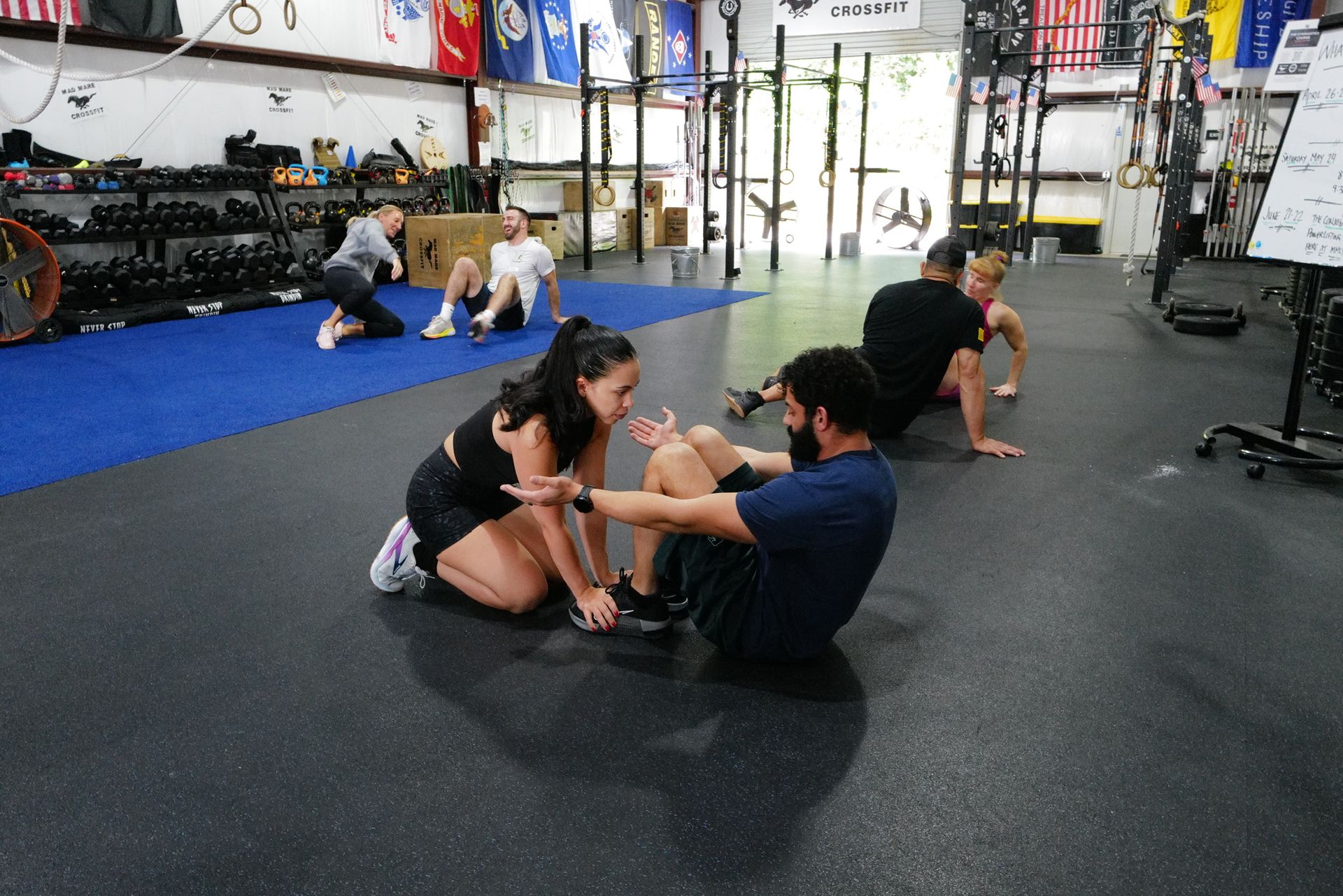
As a mechanical engineer by trade and a CrossFit owner and coach later in life, I've spent a lot of time looking for and solving problems. In the world of engineering, we rely heavily on something called Root Cause Analysis (RCA) to get to the heart of an issue. If a power plant faces a forced outage, or when a design fails, or if a plant is not operating efficiently, we don't just slap a patch on it. We dig deep, find the true source of the problem, and fix it so it doesn’t happen again. It's a clean, logical, efficient approach—and it's incredibly effective when working with systems and machines. When I transitioned into coaching CrossFit, I found RCA just as (if not even more) valuable. Complex barbell movements, like the snatch or the clean and jerk, are intricate systems themselves. When an athlete misses a lift, it's usually not just "bad luck" or lack of strength. It's often a chain of small mistakes: an early pull, poor positioning off the floor, lack of patience through the midline. Using RCA, we break the movement down into smaller parts, identify, or “spot” the flaw, correct it with targeted drills, and then reassemble the movement. This is the reason we perform “progressions” during the specific warm-up of any WOD. Over time, this process leads to better technique, fewer injuries, and stronger, more confident athletes. But here's where the story gets interesting. As helpful as RCA is for engineering and CrossFit, I've learned—sometimes the hard way—that it's not always the right tool when it comes to relationships and emotional situations.
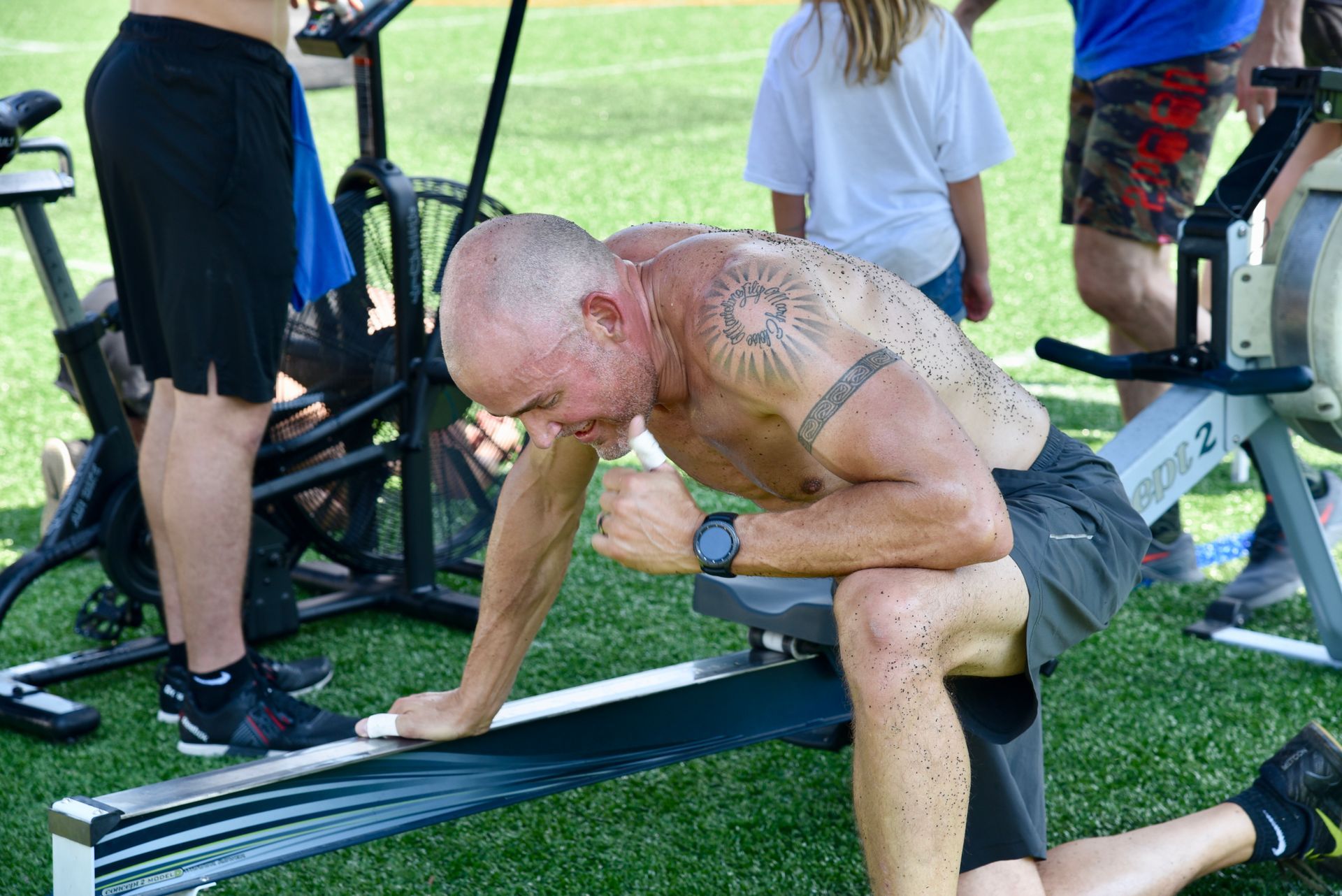
Ever feel like if you’re not leaving the gym in a puddle of sweat or breaking a personal record, the workout didn’t really count? We’ve all seen the highlight reels on social media—athletes crushing PRs, drenched in sweat, moving with max effort like their life depends on it. It’s easy to believe that unless every session is 100% intensity, we’re not doing enough. But here’s the truth: you don’t need to go “beast mode” every day to see real progress. What you do need? Consistency. Let’s break it down.

So you’re thinking about trying CrossFit—but you’re not sure where to start? You’ve seen the videos. People lifting heavy weights, climbing ropes, flipping tires, and moving fast. Maybe it looks exciting... but also a little intimidating. You might be thinking: “Do I need to be in shape before I start?” “Will I get hurt?” “Can I keep up with the class?” Here’s the good news: CrossFit is for everyone. And if you're ready to make a real change, this guide is for you. When I first walked into a CrossFit gym, I had no idea what to expect. My mind was somewhere between, 'How hard can this be?' and 'What in the world am I doing here?' The hardest part, was actually convincing myself to just walk in and try it. When I did, I found out that the people there were just like me. Everyone had their own personal struggles, but everyone showed up and became a part of the community. Everyone put forth effort and the energy spread like wildfire. What You Need to Know (and Do) Before Your First Class 1. You Don’t Need to ‘Get Fit’ Before Starting CrossFit This is a myth we hear all the time. The truth is, CrossFit meets you where you are. At Mad Mare CrossFit, every workout can be scaled to your current fitness level—whether you’re coming off the couch or you’ve been active for years. I've always said to 'newbies', ...'You don't go to a hospital when you're not sick, so why would you walk into a gym if you're in perfectly good shape?' Get it? Our coaches are trained to modify workouts for any ability. You don’t need six-pack abs or an Olympic lifting background—you just need a willingness to show up and try . 2. The Most Important Thing You Can Do: Get Proper Onboarding Jumping into CrossFit without a plan is like trying to drive a race car without driving lessons. That’s why every new athlete at Mad Mare CrossFit goes through a personalized onboarding experience. We teach you the movements, assess your strengths and limitations, and make sure you feel confident before joining group classes. Every athlete - both experienced and new-to-CrossFit will go through our onboarding assessment and coaching. We want to set you up for success. We don’t throw you into the fire—we build your fire 🔥. 3. Show Up Consistently (Even If You Feel Nervous) The hardest part is often just walking through the door. We get it. But if you can show up, even just a few times a week, we promise you'll start to feel more capable, more energized, and more at home. And don’t worry—you’ll never be alone. Every class is led by a coach who guides you through the warmup, the workout, and the cool-down. You’ll be surrounded by a community that wants to see you win. Here’s Your First Step It’s simple. You don’t need to be perfect, and you don’t need to have it all figured out. What you need is to start. At Mad Mare CrossFit, we begin with a No-Sweat Intro —a free 1-on-1 conversation where we get to know you, your goals, and help you build the right path forward. You’ve Got This. The hardest part is showing up. We’ll help with the rest. Whether you're looking to lose weight, get stronger, move better, or just feel like yourself again—Mad Mare CrossFit can help. And we’re here to guide you every step of the way.

At Mad Mare CrossFit, our group classes are the heartbeat of our community—there’s nothing like the energy of pushing through a tough workou t surrounded by like-minded athletes, coached by our expert trainers. But if you're serious about achieving your goals, there’s one powerful way to level up your results: adding personal training to the mix. Here’s why it might be exactly what you need—whether you're brand new or a seasoned athlete.

The ‘Murph’ workout is a famous CrossFit Hero WOD (Workout of the Day) named after Lt. Michael P. Murphy, a U.S. Navy SEAL who was killed in action in Afghanistan in 2005. CrossFit athletes and fitness communities complete the ‘Murph’ workout on Memorial Day Weekend as a way to honor fallen military service members, particularly Lt. Murphy, who performed this workout often while stationed in Afghanistan. Appropriately, he called the workout “Body Armor”. The workout is grueling, meant to symbolize the sacrifice and endurance of those who serve. It’s a way for athletes to push themselves mentally and physically while remembering the courage and dedication of the military heroes that paid the ultimate price for our country’s freedom. Many CrossFit gyms host ‘Murph’ Challenges as annual events, often fundraising for military charities or veteran support organizations.

Understanding Zone Training: Myths, Realities, and How to Use It Wisely When it comes to optimizing your workouts and reaching your fitness goals, understanding how hard your body is working can be just as important as knowing what movements you’re doing. This is where zone training comes into play. Originally developed for endurance athletes, zone training uses your heart rate to guide the intensity of your workouts. It’s now commonly found in mainstream fitness programs, smartwatches, and boutique fitness studios. But with its growing popularity has come a fair amount of confusion and misinformation . In this blog, I'm going to try to simplify what heart rate zones are, what they can (and can’t) tell you, and how to decide if zone training is a smart tool for your personal fitness journey. What Is Zone Training? Zone training is a method of structuring cardiovascular exercise based on intensity, measured by heart rate. Your heart rate is typically expressed as a percentage of your maximum heart rate (HRmax) , which is often estimated with the formula: 220 minus your age = estimated HRmax From there, your heart rate is segmented into five (sometimes six) zones: Zone 1 - roughly 50–60% of HRmax / Very light Active recovery, warm-ups Zone 2 - roughly 60–70% of HRmax / Light Fat burning, aerobic base building Zone 3 - roughly 70–80% of HRmax / Moderate Improved endurance, heart efficiency Zone 4 - roughly 80–90% of HRmax / Hard Improved anaerobic threshold Zone 5 - roughly 90–100% of HRmax / Very hard Max performance, power output Each zone engages different energy systems and offers different physiological benefits. For example, Zone 2 helps build long-term aerobic capacity, while Zone 4 and 5 target speed, power, and high-intensity performance. I continuously use the word "roughly" and "approximately" because Zone Training is NOT an exact science. Everyone's body reacts differently, and HR monitors are only so accurate. Also, our "HRmax" is an approximation as well. As you can see from the equation above, it's "estimated". Besides, we always tell each other that "age is just a number", no? The Myths of Zone Training Despite its usefulness, zone training is often misunderstood — especially when used outside of its original endurance-sport context. Let’s break down some of the most common myths: ❌ Myth #1: Zone training is the best system for everyone While heart rate zones are a solid tool for endurance athletes , they’re not universally applicable. Powerlifters, CrossFit athletes, or those training for muscular hypertrophy won’t gain much from tracking heart rate alone. Reality: Zone training is a tool , not a universal solution. It works best when applied to specific goals like improving aerobic fitness, stamina, or endurance — not necessarily when chasing strength or muscle mass. ❌ Myth #2: The “fat-burning zone” is the most efficient way to lose fat This is probably the most popular misunderstanding in commercial fitness. Yes, Zone 2 uses fat as a primary fuel source, but that doesn’t mean it’s the best for fat loss. Reality: Higher zones (3–5) burn more total calories , and it’s total energy balance that matters for fat loss—not which fuel source your body uses during exercise. ❌ Myth #3: The higher the zone, the better the workout People often think that if their heart rate isn’t sky-high, they’re not working hard enough. But that’s simply not true. Reality: High-intensity work has its place, but overusing Zones 4–5 can lead to burnout, elevated cortisol, and injury. Elite endurance athletes spend 70–80% of their training time in Zone 2 to build a solid aerobic base. Your body needs variety to adapt and grow. ❌ Myth #4: Your heart rate is a perfectly accurate measurement of effort Heart rate is influenced by many factors: stress, hydration, caffeine, sleep, heat, even time of day. Reality: While useful, heart rate is just one piece of the puzzle . RPE (Rate of Perceived Exertion), breathing rate, and movement quality are also key indicators of intensity and recovery needs. ❌ Myth #5: Zone training replaces strength training Since it’s focused on cardiovascular intensity, zone training doesn’t stimulate muscle growth or bone density the way lifting does. Reality: For well-rounded fitness, you still need resistance training , mobility work, and proper recovery. Zone training supports your goals—it doesn’t cover all of them. Real Benefits of Zone Training Zone training has legitimate value when applied correctly. Here’s what it can do well: ✅ Improve aerobic efficiency Zone 2 training increases mitochondrial density and teaches your body to burn fat more effectively during exercise. ✅ Prevent overtraining By mixing lower-intensity days with hard intervals, zone training can help avoid the all-too-common trap of “going hard every day,” which often leads to fatigue or injury. ✅ Help with pacing Especially in endurance sports or longer CrossFit workouts, heart rate feedback can keep athletes from burning out too early in a session. ✅ Monitor cardiovascular progress Over time, if you’re able to perform more work while staying in a lower heart rate zone, it’s a clear sign that your aerobic fitness is improving. Should You Use Zone Training? Whether or not zone training is right for you depends on your goals. Great candidates include: Runners, cyclists, rowers, triathletes CrossFit athletes seeking better aerobic capacity for long metcons - remember, CrossFit is WAY more than just aerobic capacity General fitness clients looking to improve stamina or heart health Zone training becomes especially effective when paired with a strength program , smart nutrition, and adequate recovery. Maybe skip it if: You train primarily for maximum strength, powerlifting, or aesthetics You don’t have a reliable heart rate monitor You tend to get anxious or overly fixated on numbers (you know who you are) How to Get Started Calculate your HRmax using 220 minus your age (or better, test it directly under supervision). Use a heart rate monitor for accuracy — wrist-worn monitors are OK, but chest straps are more precise. Start tracking your workouts and aim for a mix of Zone 2 base-building and higher zone intervals. Combine with strength training 2–3 days per week. Most likely - if you follow our programming - you're already getting this. Evaluate every 4–6 weeks —can you do more work at the same heart rate? That’s progress. I can't say it enough - track your results. Final Thoughts Zone training isn’t a gimmick—it’s a legitimate, research-backed method to improve endurance, burn fat, and build heart health. But like any tool, it works best when used in the right context. At Mad Mare CrossFit , we don’t train just for heart rate numbers. We train for real results using 10 physical skills as a benchmark — strength, endurance, stamina, speed, cardiovascular capacity, balance, accuracy, power, agility, flexibility, and most importantly, confidence that carries over into life. Zone training can be part of that picture, but it’s never the whole story. If you're curious about how to blend zone training into your CrossFit or personal training program, come talk to me or one of our coaches. We’re here to guide you through the data—and through the work. Here are some of the sources of the information used in my blog: CrossFit.com American College of Sports Medicine (ACSM) Journal of Strength and Conditioning Research "Training Zones: Fact or Fiction?" – National Academy of Sports Medicine (NASM) Seiler, Stephen. "Intervals, Thresholds, and Long Slow Distance." (Sports Science Review)

If you've been on the fence, or you're thinking, 'That workout looks intense — maybe it's not for me,’ I get it. Murph is tough. But I want you to know something: This is not about your score. This is about showing up. It’s about coming together as a community to honor Lt. Michael P. Murphy — a Navy SEAL who gave his life in service to our country. But even more than that, this workout brings people together. You’ll see experienced athletes and first-timers working side-by-side. You’ll see scaling options, encouragement, and a lot of high-fives. You’ll feel what it’s like to be part of something bigger than yourself — and that’s what makes Murph special.

As a mechanical engineer by trade and a CrossFit owner and coach later in life, I've spent a lot of time looking for and solving problems. In the world of engineering, we rely heavily on something called Root Cause Analysis (RCA) to get to the heart of an issue. If a power plant faces a forced outage, or when a design fails, or if a plant is not operating efficiently, we don't just slap a patch on it. We dig deep, find the true source of the problem, and fix it so it doesn’t happen again. It's a clean, logical, efficient approach—and it's incredibly effective when working with systems and machines. When I transitioned into coaching CrossFit, I found RCA just as (if not even more) valuable. Complex barbell movements, like the snatch or the clean and jerk, are intricate systems themselves. When an athlete misses a lift, it's usually not just "bad luck" or lack of strength. It's often a chain of small mistakes: an early pull, poor positioning off the floor, lack of patience through the midline. Using RCA, we break the movement down into smaller parts, identify, or “spot” the flaw, correct it with targeted drills, and then reassemble the movement. This is the reason we perform “progressions” during the specific warm-up of any WOD. Over time, this process leads to better technique, fewer injuries, and stronger, more confident athletes. But here's where the story gets interesting. As helpful as RCA is for engineering and CrossFit, I've learned—sometimes the hard way—that it's not always the right tool when it comes to relationships and emotional situations.

Ever feel like if you’re not leaving the gym in a puddle of sweat or breaking a personal record, the workout didn’t really count? We’ve all seen the highlight reels on social media—athletes crushing PRs, drenched in sweat, moving with max effort like their life depends on it. It’s easy to believe that unless every session is 100% intensity, we’re not doing enough. But here’s the truth: you don’t need to go “beast mode” every day to see real progress. What you do need? Consistency. Let’s break it down.

So you’re thinking about trying CrossFit—but you’re not sure where to start? You’ve seen the videos. People lifting heavy weights, climbing ropes, flipping tires, and moving fast. Maybe it looks exciting... but also a little intimidating. You might be thinking: “Do I need to be in shape before I start?” “Will I get hurt?” “Can I keep up with the class?” Here’s the good news: CrossFit is for everyone. And if you're ready to make a real change, this guide is for you. When I first walked into a CrossFit gym, I had no idea what to expect. My mind was somewhere between, 'How hard can this be?' and 'What in the world am I doing here?' The hardest part, was actually convincing myself to just walk in and try it. When I did, I found out that the people there were just like me. Everyone had their own personal struggles, but everyone showed up and became a part of the community. Everyone put forth effort and the energy spread like wildfire. What You Need to Know (and Do) Before Your First Class 1. You Don’t Need to ‘Get Fit’ Before Starting CrossFit This is a myth we hear all the time. The truth is, CrossFit meets you where you are. At Mad Mare CrossFit, every workout can be scaled to your current fitness level—whether you’re coming off the couch or you’ve been active for years. I've always said to 'newbies', ...'You don't go to a hospital when you're not sick, so why would you walk into a gym if you're in perfectly good shape?' Get it? Our coaches are trained to modify workouts for any ability. You don’t need six-pack abs or an Olympic lifting background—you just need a willingness to show up and try . 2. The Most Important Thing You Can Do: Get Proper Onboarding Jumping into CrossFit without a plan is like trying to drive a race car without driving lessons. That’s why every new athlete at Mad Mare CrossFit goes through a personalized onboarding experience. We teach you the movements, assess your strengths and limitations, and make sure you feel confident before joining group classes. Every athlete - both experienced and new-to-CrossFit will go through our onboarding assessment and coaching. We want to set you up for success. We don’t throw you into the fire—we build your fire 🔥. 3. Show Up Consistently (Even If You Feel Nervous) The hardest part is often just walking through the door. We get it. But if you can show up, even just a few times a week, we promise you'll start to feel more capable, more energized, and more at home. And don’t worry—you’ll never be alone. Every class is led by a coach who guides you through the warmup, the workout, and the cool-down. You’ll be surrounded by a community that wants to see you win. Here’s Your First Step It’s simple. You don’t need to be perfect, and you don’t need to have it all figured out. What you need is to start. At Mad Mare CrossFit, we begin with a No-Sweat Intro —a free 1-on-1 conversation where we get to know you, your goals, and help you build the right path forward. You’ve Got This. The hardest part is showing up. We’ll help with the rest. Whether you're looking to lose weight, get stronger, move better, or just feel like yourself again—Mad Mare CrossFit can help. And we’re here to guide you every step of the way.

At Mad Mare CrossFit, our group classes are the heartbeat of our community—there’s nothing like the energy of pushing through a tough workou t surrounded by like-minded athletes, coached by our expert trainers. But if you're serious about achieving your goals, there’s one powerful way to level up your results: adding personal training to the mix. Here’s why it might be exactly what you need—whether you're brand new or a seasoned athlete.

The ‘Murph’ workout is a famous CrossFit Hero WOD (Workout of the Day) named after Lt. Michael P. Murphy, a U.S. Navy SEAL who was killed in action in Afghanistan in 2005. CrossFit athletes and fitness communities complete the ‘Murph’ workout on Memorial Day Weekend as a way to honor fallen military service members, particularly Lt. Murphy, who performed this workout often while stationed in Afghanistan. Appropriately, he called the workout “Body Armor”. The workout is grueling, meant to symbolize the sacrifice and endurance of those who serve. It’s a way for athletes to push themselves mentally and physically while remembering the courage and dedication of the military heroes that paid the ultimate price for our country’s freedom. Many CrossFit gyms host ‘Murph’ Challenges as annual events, often fundraising for military charities or veteran support organizations.
